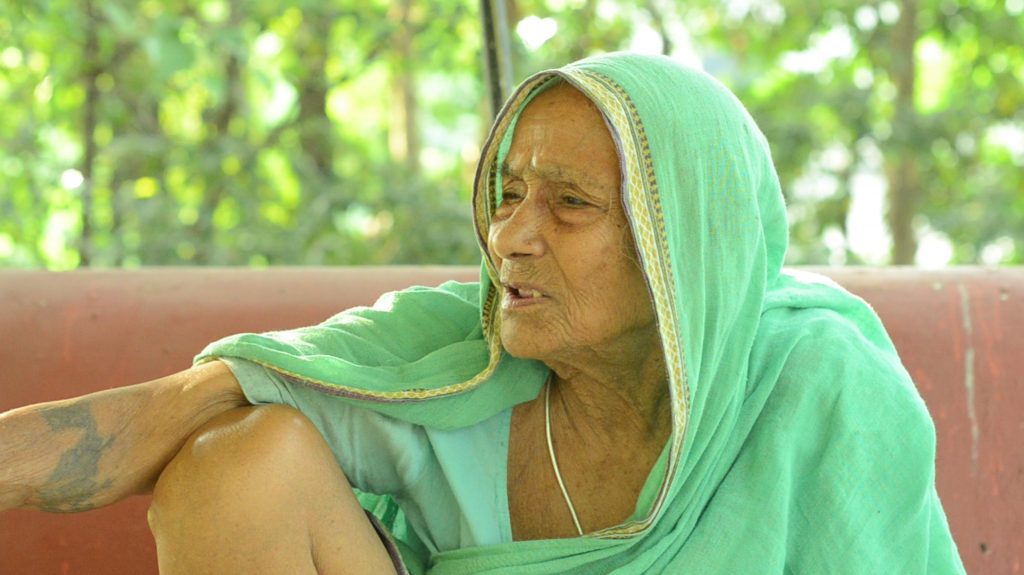How does one process separation? Make sense of suffering? If you ask people today, chances are they will show you some Spotify playlist or any number of self-help books. But once upon a time, when there wasn’t such a thing as Spotify and influencers didn’t preach self-improvement, people also had to deal with the same things that people today deal with, things like loss, longing, failure and regret. And what helped people then deal with all of these was songs and stories, loosely referred to as folklore, these were passed down generations not through the written script but through the grandmothers, and other gifted storytellers, of many communities.
In his documentary Nani Ma, Subhashish Panigrahi takes a snapshot of this folklore, available to him through his grandmother, Musamoni Panigrahi, born in the Balasore district of Odisha in the 1920s who carried the lore from one century to the next, from one era to another.
“I never realised that our grandparents are such amazing storytellers and hold so much wisdom. Only when I stayed away from Odisha, I realised that,” ruminates Subhashish who recorded the interviews with Musamoni used in the film between 2014-16, while visiting home back from his then place of work, Bangalore.
Initially, the purpose was uncertain, though partly he wanted to document dementia, memory loss and the effect of aging. “When my grandmother was 95, she couldn’t recall things she used to do so easily before,” says Subhashish. But with time, in the interviews, layers emerged, introducing him to new dimensions.
The folktales Musamoni narrated were distorted, with her brain erasing parts of her memory, and her imagination stepping in to fill the gaps. The songs almost took a new meaning, assuming an authenticity. The scope that was once limited to memory and folklore expanded to include language, how it flows, across ethnographic boundaries, evolves, absorbing new expressions and abandoning old customs, and how people attempt to exert control over that flow and evolution.
In Odisha, one of the first states in India to have been formed on the basis of language, people speak many languages, many tongues, many dialects. Those who live in the districts that border West Bengal, Jharkhand and Andhra Pradesh speak a tongue that’s heavily influenced by the languages of the bordering states. The tribal people scattered across the geography have their own languages and rich linguistic histories. People migrate, for markets, and for marriage, and with them they carry their languages, exchanging on the way, borrowing, and loaning out.
The folktales Musamoni narrated were distorted, with her brain erasing parts of her memory, and her imagination stepping in to fill the gaps
But for some, this multiplicity, diversity, is confusing, and unacceptable. These are the aberrations they want to see get eliminated, that’s why they separate the ‘suddha’ (pure), from the ‘apabhransa’ (corrupted). “People differentiate between suddha and apabhransa because it gives them a sense of superiority, exactly like the caste system. These are only extensions of Brahminical supremacy,” says Subhashish, who argues that the effort to standardize language is a mistaken pursuit. “We won’t become inferior if we use loan words, say medical or scientific terms from English,” he says, going on to add, that in trying to homogenize culture, “we are actually killing other people’s cultures, because there always has been many cultures.”
Though these issues of language and culture are politically polarising, Panigrahi’s choice of human subject, his grandmother, seems more personal than political. He captures her with a kind of tenderness and compassion that you only reserve for a loved one. There is also a sense of impending loss, that’s irreversible, as Musamoni, her generation and their wisdom confront the cruelty of time, death and decay.
But for some, this multiplicity and diversity are confusing, and unacceptable. These are the aberrations they want to see get eliminated, that’s why they separate the ‘suddha’ (pure), from the ‘apabhransa’ (corrupted)
But by picking a simple structure–interviews with Musamoni interspersed with exposition from experts–Panigrahi gives the stage entirely to his grandmother, leaving her to narrate her own stories, with her own voice, in a society that hesitates before giving agency to women. And this choice yields good results, as the subjective prevails over the objective, as the film becomes something more than mere documentation of Baleswari Odia or regional folktales. Hopefully, this will inspire documentarians, historians and academics from all linguistic and ethnographic backgrounds to preserve, record, what has been gradually disappearing, beneath our eyes, in the tide of time.
